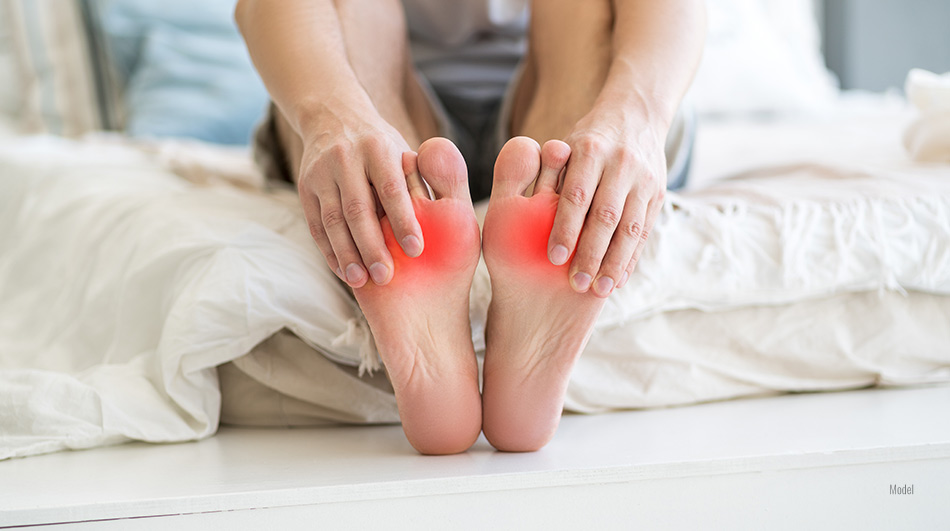What Does Bunion Pain Feel Like?
Posted April 18, 2024 in Bunion Pain

This blog discusses the basics of bunions: what they are, how they’re formed, and how to tell if foot pain is from bunions.
3 Min Read:
How to Tell If You Have a Bunion
People take walking around comfortably for granted until it’s gone. If you walk a lot, as many New Yorkers do, you’re probably aware when you experience new twinges and aches in your feet. But what do those aches and pains mean? When is it finally time to see your podiatrist?
We’ll break down one of the most common podiatric concerns–bunions–and how to tell if you have them and what to do about them.
What Are Bunions?
Bunions are, aside from being one of the most common foot conditions in the U.S., a misalignment of the first metatarsal-phalangeal (MTP) joint, which is located just at the base of the big toe, which results in a protrusion of a bony lump on the inside of the foot.
Bunions are caused by tight or narrow shoes, such as high heels, a progressive flattening of the foot, the shape of your foot (genetics), or a medical condition that causes you to walk unevenly, such as arthritis.
Most people notice the bony lump on the side of their feet as an initial indication of a bunion; others may notice a corn or callus forming on the second toe.
Do Bunions Cause Pain?
The most common early symptom of a bunion is pain. Most people will notice tenderness after walking or being on their feet all day or that their big toe is stiff.
Bunion pain varies from person to person, depending on the patient’s condition. It can range from mild to severe, and it can be constant or flare up after aggravating activities.
If you have a bunion, you might feel a throbbing pain in your big toe or pain that extends through the ball of your foot.
Some patients also experience redness or swelling at the base of their big toe, which can help determine if what you’re feeling is, in fact, a bunion.
What Do I Do If I Think I Have a Bunion?
If your condition is early, such as you’re only experiencing some new tenderness in your big toe and you haven’t noticed any other symptoms, you might be able to make some adjustments before your condition gets worse.
To prevent a bunion from progressing, you can try switching your footwear to something more supportive and less cramped–and definitely avoid high heels.
It’s important to get the care you need as soon as possible, as severe cases of bunions can cause arthritis, greatly impact mobility, and cause debilitating pain.
If you think you have a bunion, the best course of action is to schedule an appointment with an NYC bunion specialist, such as Dr. Ethan Ciment at Chelsea Foot & Ankle.
NYC Bunion Specialists
At Chelsea Foot & Ankle, we know how debilitating bunion pain can be. We also understand how important a precise diagnosis is, so while these tips can be helpful, it is always best to see a specialist.
Early bunion treatment may consist of protective pads to cushion the joint, supportive shoes, or custom-made orthotics.
Our NYC podiatrists always take a conservative approach to bunion treatment, leaving surgery as a last resort. This ensures that we recommend surgery only when we are confident of your diagnosis and that we have exhausted all other approaches.
Do You Need Bunion Treatment in New York City?
If you think you have bunions or other common foot and ankle issues, don’t wait–call your NYC podiatrist today. Chelsea Foot & Ankle offers expert diagnostics and boutique podiatric care. Call us today at (646) 929-4149 or fill out our online contact form.
